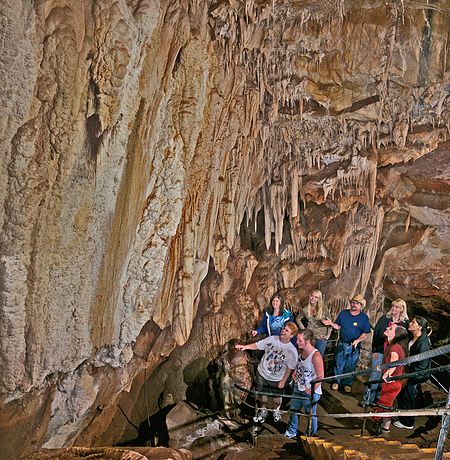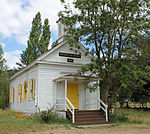Mercer Caverns
Caves of CaliforniaLandforms of Calaveras County, CaliforniaLimestone cavesShow caves in the United StatesTourist attractions in Calaveras County, California ... and 1 more
United States geology stubs

Mercer Caverns is a show cave located one mile north of Murphys in Calaveras County California. It is named after the gold prospector Walter J. Mercer who discovered the caves around 1885 and filed a claim. The caverns have a large number of speleothems, stalactites, and stalagmites. It is formed in a marble unit known as the Calaveras Formation. It also contains a large display of aragonite frostwork. The standard tour of the cave descends 160 feet, 208 steps down and 232 up in a traverse between the natural and an artificial entrance. The cave was mapped in 1986 to a length of 3389 feet and a total depth of 192 feet. The map can be viewed on the cave's web site.
Excerpt from the Wikipedia article Mercer Caverns (License: CC BY-SA 3.0, Authors, Images).Mercer Caverns
Mercer Cave Road,
Geographical coordinates (GPS) Address Nearby Places Show on map
Geographical coordinates (GPS)
| Latitude | Longitude |
|---|---|
| N 38.151388888889 ° | E -120.47833333333 ° |
Address
Mercer Cave Road
96249
California, United States
Open on Google Maps






